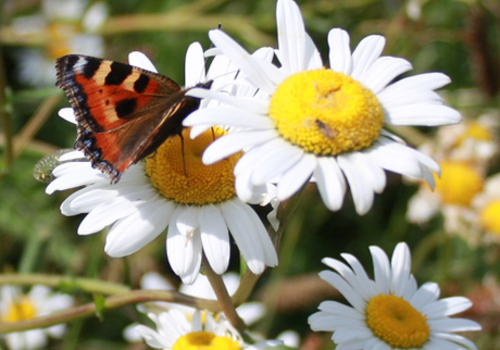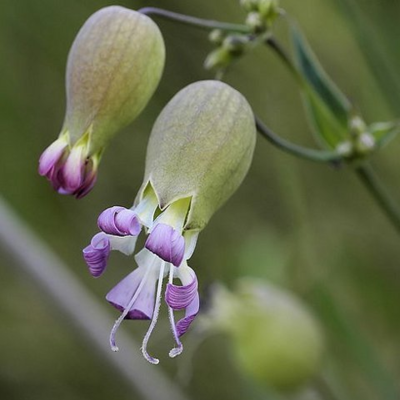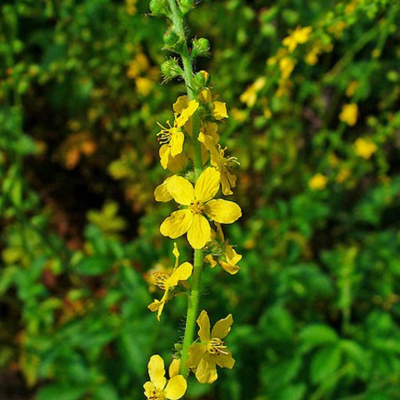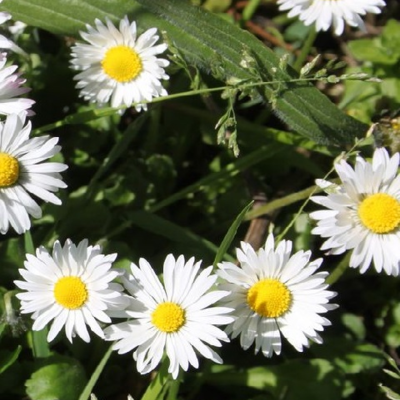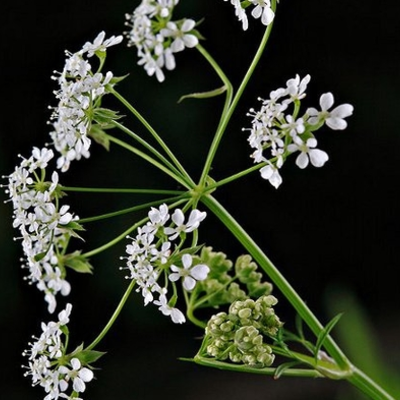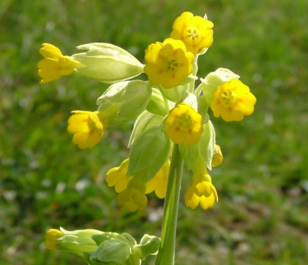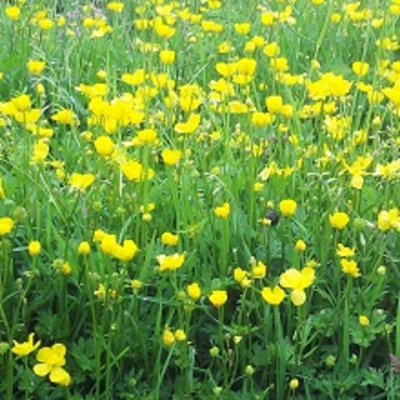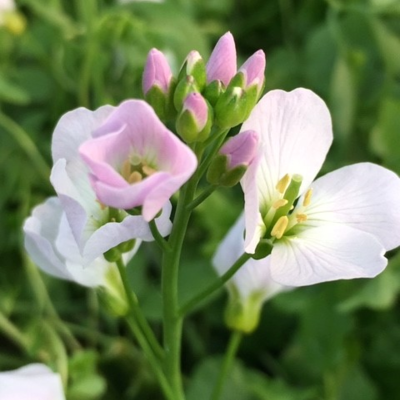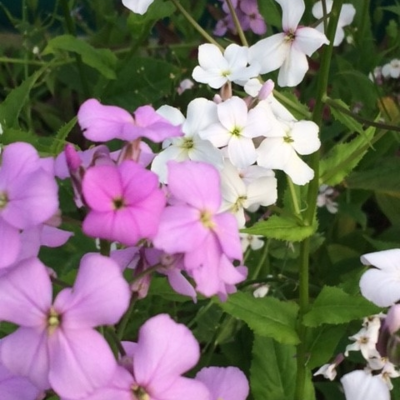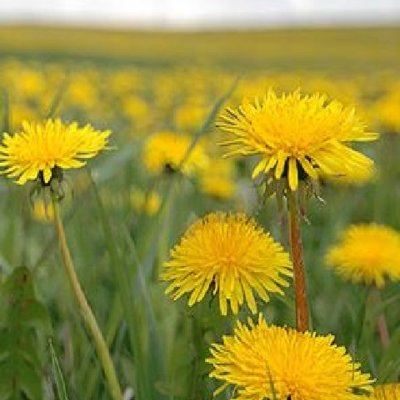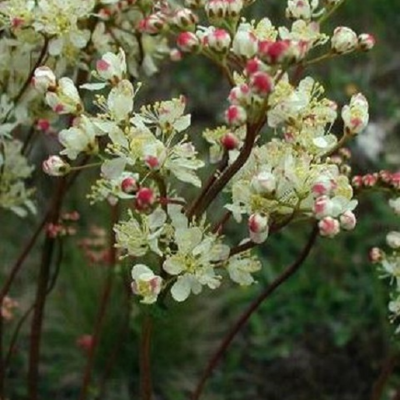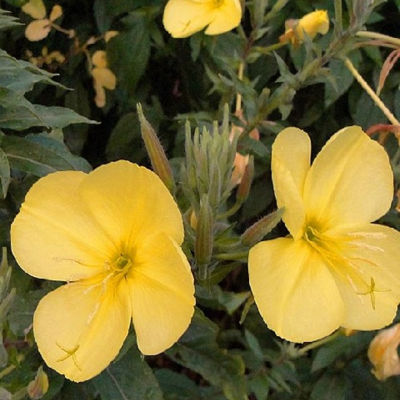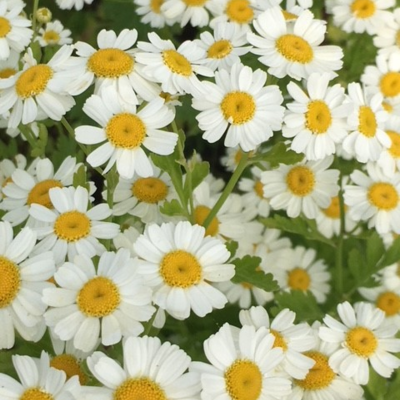Wildflower Plants A to Z
Choose from our entire range of over 100 wildflower plug plants, expertly grown in our very own nursery from high quality, UK native wildflower seed. Our wildflower plugs are ready to be planted straight out into your garden or meadow as soon as they arrive, all year round. Buying individual wildflower plants is one of the best ways to establish your chosen wildflower species, planted individually or as part of a more diverse meadow created from our range of wildflower seeds.
Don't hesitate to get in touch to speak to one of our experts or request a catalogue to view our full range. Ordering regularly or looking for large volumes? Click here to apply for a trade account today - we review all applications within one working day.
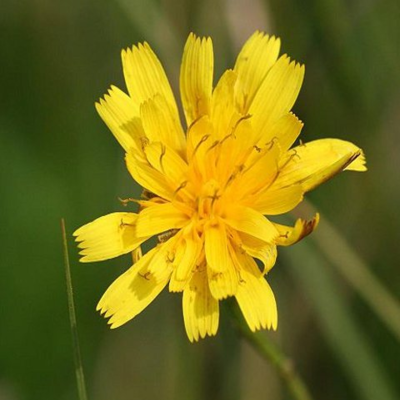

Plants for Pollinators highlights plants selected by the RHS as scientifically proven to tackle the declines in bees, butterflies and other pollinators.
In the autumnal gloom, spread some extra sunshine in a marshy environment with these dandelion-like rosettes of glinting gold. Not only is the Autumn Hawkbit long-lived, robust and especially attractive to pollinators, its seeds are also attractive to finches!
- Type: Perennial
- Height: 15-50cm.
- Flowers: July-September
- Soil Requirement: Moist
- Light Requirement: Full sun or partial shade
- Natural Habitat: Grasslands, rocky ridges, pathways.
- Also known as: Fall Dandelion
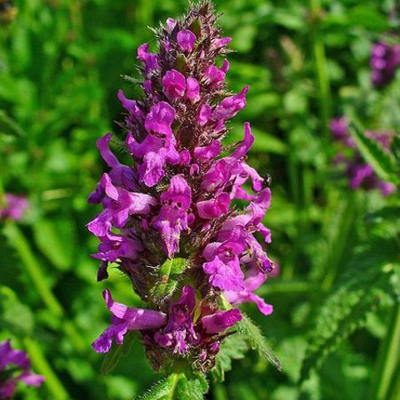

Plants for Pollinators highlights plants selected by the RHS as scientifically proven to tackle the declines in bees, butterflies and other pollinators.
Betony flowers bloom in spikes of rich wine red and purple, alongside distinct and attractive foliage. Its flowers are also known to attract bees and butterflies and they used to be planted in churchyards for spiritual protection. They grow well in any light, with an affinity for damp soil.
- Type: Perennial
- Height: 30-60cm.
- Flowers: June-August
- Soil Requirement: Moist but well-drained
- Light Requirement: Full sun or partial shade
- Natural Habitat: Grassy meadows, river banks
- Also known as: Bishops’s Wort, Wood Betony, Common Hedgenettle

Plants for Pollinators highlights plants selected by the RHS as scientifically proven to tackle the declines in bees, butterflies and other pollinators.
An unusual yet distinct variant of campion, which has grey-tinted foliage and grows drooping, fresh white bladders veined with purple, and five-petalled flowers. A plant with a subtle, withdrawn beauty that also attracts bees and butterflies.
- Type: Perennial
- Height: 20–60cm.
- Flowers: June-August
- Soil Requirement: Well-drained
- Light Requirement: Full sun
- Natural Habitat: Meadows, open forests, hedgerows
- Also known as: Cowbell, Maiden’s Tears
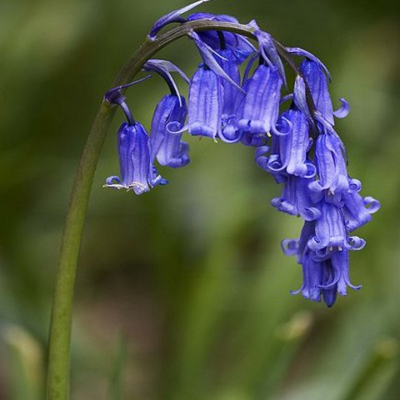

Plants for Pollinators highlights plants selected by the RHS as scientifically proven to tackle the declines in bees, butterflies and other pollinators.
What else is there to say about the dainty azure arcs of the beloved Bluebell? Though they take several years to develop from seed, fully grown bluebells naturalise quickly and can multiply over time, leaving your garden awash and aglow with the famous fairy-tale flora! In addition, Bluebells can rarely grow in pink and white.
- Type: Perennial
- Height: 30–60cm.
- Flowers: April-June
- Soil Requirement: Well-drained
- Light Requirement: Partial shade
- Natural Habitat: Woodlands, hedge banks
- Also known as: Bell Bottle, Cuckoo’s Boots, Witch’s Thimbles
This item is currently unavailable
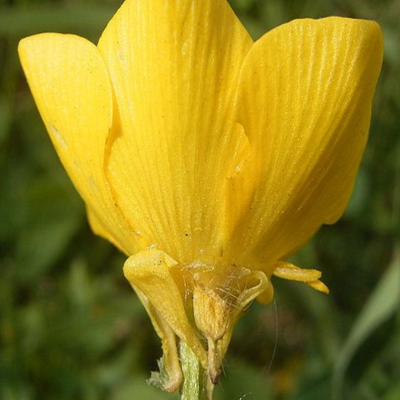

Plants for Pollinators highlights plants selected by the RHS as scientifically proven to tackle the declines in bees, butterflies and other pollinators.
So-named for their swollen underground stem, the bulbous buttercup is a more widespread variant of the iconic glossy-yellow springtime wildflower. Thrives in acidic soil, with good sunlight to best bring out its golden glow.
- Type: Perennial
- Height: 30–45cm.
- Flowers: March-June
- Soil Requirement: Well-drained
- Light Requirement: Full sun
- Natural Habitat: Meadows, grasslands, road verges
- Also known as: Frogs-Foot, Goldcup
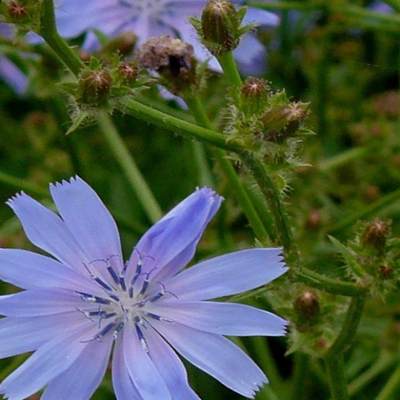

Plants for Pollinators highlights plants selected by the RHS as scientifically proven to tackle the declines in bees, butterflies and other pollinators.
The Chicory is a perfect mix of energetic colour and grace, producing feathery, sky blue petals on thin, branching stems. In addition to making a creative climber, the Chicory’s roots have also seen a wide range of culinary uses, especially as an alternative to coffee - but we think the beauty of its bold blooms are enough of a boost!
- Type: Perennial
- Height: 30–90cm.
- Flowers: June-October
- Soil Requirement: Well-drained
- Light Requirement: Full sun
- Natural Habitat: Fields, road verges
- Also known as: Blue Dandelion, French Endive, Succory
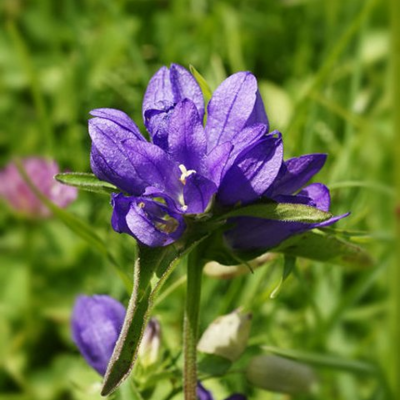

Plants for Pollinators highlights plants selected by the RHS as scientifically proven to tackle the declines in bees, butterflies and other pollinators.
As its name suggests, the Clustered Bellflower sprouts dense bursts of vivid violet-blue flowers. Each flower is its own brilliant bouquet, on top of being hardy and attractive to bees and butterflies!
- Type: Perennial
- Height: 30–75cm.
- Flowers: June-September
- Soil Requirement: Well-drained, chalky
- Light Requirement: Partial shade
- Natural Habitat: Grasslands, coastal cliffs
- Also known as: Dane’s Blood
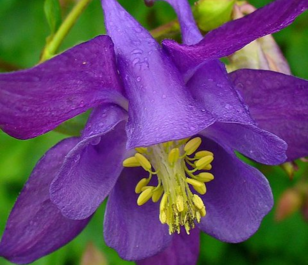

Plants for Pollinators highlights plants selected by the RHS as scientifically proven to tackle the declines in bees, butterflies and other pollinators.
The beautiful, nodding, bell-shaped blooms of the Columbine flower come in a variety of colours, even bi-coloured, though the most common colour in the wild is a vivid blue-violet, contrasted by a shining stamen the colour of honey, which is attractive to bees and butterflies. A cute cottage classic, perfect for pots, beds and borders, as it’s easy to grow and naturalise, though it dislikes being too dry.
- Type: Perennial
- Height: 45–60cm
- Flowers: June-July
- Soil Requirement: Moist but well-drained
- Light Requirement: Full sun or partial shade
- Natural Habitat: Woodlands, roadsides, grasslands
- Also known as: Dove Plant, Lady’s Shoes, Pigeon Foot

Plants for Pollinators highlights plants selected by the RHS as scientifically proven to tackle the declines in bees, butterflies and other pollinators.
Common Agrimony is an attractive, medium height meadow plant, consising of tall spires of star-shaped, sunny yellow flowers. An wildlife-friendly flower, it's attractive to pollinators as well as wild birds.
- Type: Perennial
- Height: 40-80cm
- Flowers: June to September
- Soil requirement: Neutral, well-drained
- Light requirement: Full sun or partial shade
- Natural habitat: Southern UK, grassland, meadows, roadsides
- Also known as: Church Steeples, Sticklewort, Aaron's Rod, Clot-Bur, Fairy's Wand, Money-In-Both-Pockets, Salt-And-Pepper, Sweethearts
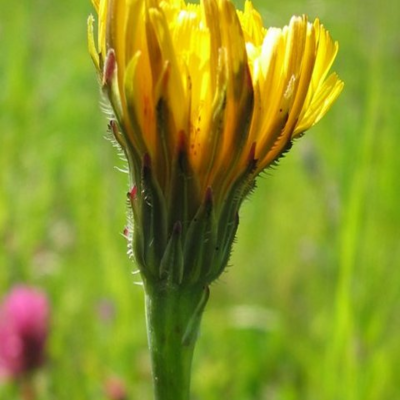

Plants for Pollinators highlights plants selected by the RHS as scientifically proven to tackle the declines in bees, butterflies and other pollinators.
The Common Cat's-Ear is a must-have for meadows, providing a scattering of sunny yellow blooms which return year after year, all while attracting pollinators and being relatively easy to take care of- they simply are the cat's pajamas!
- Type: Perennial
- Height: 30-45cm.
- Flowers: May-September
- Soil Requirement: Well-drained
- Light Requirement: Full sun or part shade
- Natural Habitat: Roadsides, grasslands
- Also known as: Flatweed, False Dandelion

Plants for Pollinators highlights plants selected by the RHS as scientifically proven to tackle the declines in bees, butterflies and other pollinators.
Appearance-wise, the Common Daisy’s nothing crazy, with a ruffle of thin white petals, sometimes tinged pink, framing a central crown of tiny yellow florets. But love it or love it not, this famous flora is certainly robust, hardy and long-flowering, meaning its classic, cheery charm will shine in a lawn, bed or meadow for quite some time.
- Type: Perennial
- Height: 5–10cm.
- Flowers: All year
- Soil Requirement: Moist or well-drained
- Light Requirement: Full sun or partial shade
- Natural Habitat: Meadows, woodlands, road verges
- Also known as: Bone Flower, Goose Flower, Luckin Gowan
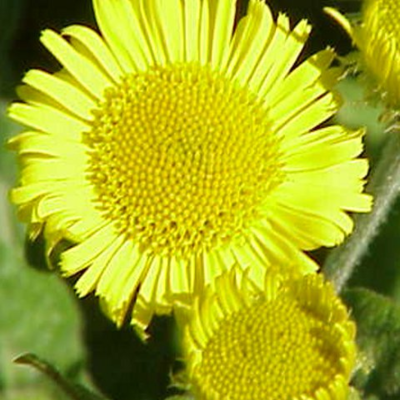

Plants for Pollinators highlights plants selected by the RHS as scientifically proven to tackle the declines in bees, butterflies and other pollinators.
If you're itching for a good pond-side plant, this may be what you need: these branches of bold yellow, daisy-like florets with ray-like petals are the most effective way to place some sunshine in a shady spot, but also has use in repelling invasive insects with its unique scent.
- Type: Perennial
- Height: 30-60cm.
- Flowers: July-September
- Soil Requirement: Moist
- Light Requirement: Full sun or partial shade
- Natural Habitat: Riversides, marshes, ditches
- Also known as: Harvest Flower, Job’s Tears, Pig-Daisy
Pure-white, delicate flowers standing proud on long feathered stems commonly found in roadsides and meadows. These umbrella-like clusters grow rapidly in the warm summer months and are home to an abundant supply of bees and pollinators.
- Type: Perennial
- Height: 60-90cm
- Flowers: May-June
- Soil requirement: Neutral, well-drained
- Light requirement: Full sun to semi-shade
- Natural habitat: Grassland, meadows, hedgerows and woodlands
- Also known as: Queen Anne's Lace, Wild Chervil, Wild Beaked Parsley, Keck

Plants for Pollinators highlights plants selected by the RHS as scientifically proven to tackle the declines in bees, butterflies and other pollinators.
Cowslip plants form clusters of bell-shaped, sunny yellow flowers with distinct tubed calyxes. Known for having a sweet and strong scent compared to apricots, and it has a history in folklore, with uses in weddings and other festivities. An easy-to-grow Easter-time treat!
- Type: Perennial
- Height: 15–30cm.
- Flowers: April-May
- Soil Requirement: Moist but well-drained
- Light Requirement: Full sun or partial shade
- Natural Habitat: Meadows, woodlands, road verges
- Also known as: Fairy Cup, Key Flower, Luck Flower, Paggles
The Creeping Buttercup has classic charm, with glossy yellow, five-petalled flowers on short stems covered with fine hairs. A natural attractant for pollinators, and it adds a wonderful golden glow to lawns, paths, and spots with loamy soil.
- Type: Perennial
- Height: 20-50cm.
- Flowers: May-September
- Soil Requirement: Moist
- Light Requirement: Full sun or partial shade
- Natural Habitat: Damp grasslands, gardens, pastures
- Also known as: Lantern Leaves, Ram's Claws, Sit-Fast
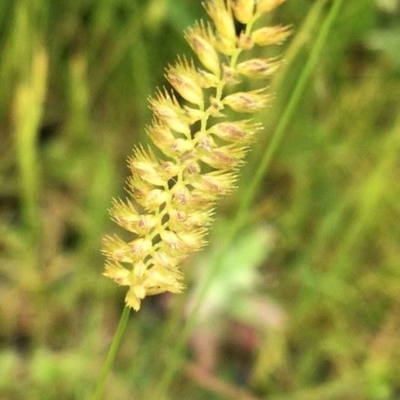

Plants for Pollinators highlights plants selected by the RHS as scientifically proven to tackle the declines in bees, butterflies and other pollinators.
Although its clustered spikelets trimmed with miniature magenta florets are now grown more as an ornamental plant, Crested Dogstail was once grown to be used to make bonnets. An important food plant for multiple species of butterflies, and works wonderfully in a wildmeadow mix, as it's exceptionally hardy- able to survive drought and cold and remain green throughout winter.
- Type: Perennial
- Height: 30–75cm.
- Flowers: May-June
- Soil Requirement: Moist but well-drained
- Light Requirement: Full sun or partial shade
- Natural Habitat: Meadows, grasslands
- Also known as: Dog's Grass, Dog's Tail Grass, Windlestraw

Plants for Pollinators highlights plants selected by the RHS as scientifically proven to tackle the declines in bees, butterflies and other pollinators.
Produces rosettes of leaves at the base of the stem leading up to its four pale pink petals. A flower that captures the essence of springtime; it's named because it blooms the same time you'd start to hear a Cuckoo's call.
- Type: Perennial
- Height: 30 – 50cm.
- Flowers: April - June
- Soil Requirement: Moist but well-drained
- Light Requirement: Full sun or partial shade
- Natural Habitat: Damp meadows, pond margins, riverbanks
- Also known as: Lady's-Smock, Cuckoo Bread, Mayflower
With its clusters of uniquely vivid lilac petals with bursts of white, the Dames-Violet seems very different to her fellow violets, but bears the same sweet fragrance, which grows stronger in the evenings! A favourite of pollinators, and the dried petals can also be used for potpurri.
- Type: Perennial
- Height: 60-90cm
- Flowers: May-August
- Soil requirement: Moist but well-drained
- Light requirement: Full sun or partial shade
- Natural habitat: Hedgerows, wood edges, wasteground
- Also known as: Damask, Queen's Gilliflower, Sweet Rocket,

Plants for Pollinators highlights plants selected by the RHS as scientifically proven to tackle the declines in bees, butterflies and other pollinators.
This well-known wildflower provides proudly blazing bursts of golden petals in springtime landscapes! Hardy, easy-to-grow and wonderful for attracting pollinators, the dandelion's beauty is certainly something to sink your teeth into - in fact, its name originates from “lion’s tooth,” referring to their deeply serrated leaves.
- Type: Perennial
- Height: 10-45cm.
- Flowers: April-May
- Soil Requirement: Well-drained
- Light Requirement: Full sun or partial shade
- Natural Habitat: Meadows, road verges, fields
- Also known as: Bitterwort, Clock Flower, Lion’s Tooth

Plants for Pollinators highlights plants selected by the RHS as scientifically proven to tackle the declines in bees, butterflies and other pollinators.
Everything about this plant appears as soft and sweet as its common nickname, ‘Meadowsweet’: from its long, wispy branches of foaming, peachy-pink and creamy white flowers, down to its strong, sweet aroma. Plant in heavier, loamy soil- perhaps pairing it with other pastel plants for a real display of eye candy!
- Type: Perennial
- Height: 60-90cm
- Flowers: May-August
- Soil Requirement: Moist but well-drained
- Light Requirement: Full sun or partial shade
- Natural Habitat: Woodland verges, roadside verges, damp meadows
- Also known as: Lady’s Belt, Little Queen, Meadowsweet
The Evening Primrose is an easy-to-grow, tall-growing plant that really screams summertime style: its bell-shaped blooms grow in striking shades of yellow, pink and white, and produce a fetching fragrance. As its name suggests, it blooms late in the day, and but seeing the Evening Primrose's floral goblets glowing in the summer sunset is surely a sight to behold.
- Type: Biennial
- Height: 100-150cm.
- Flowers: June-October
- Soil Requirement: Well-drained, sandy
- Light Requirement: Full sun or partial shade
- Natural Habitat: Roadside verges, meadows
- Also known as: Cure-All, Four O’Clock, German Rambion
Here’s a real treat for you: the Feverfew is a small, bushy plant which grows daisy-like flower heads. Its small-but-dense size makes it a perfect potted plant, and though it likes being under the weather in plentiful sunlight, one may try to raise it indoors to best appreciate its strong scent. Highly valued for medicinal uses.
- Type: Perennial
- Height: 15–45cm.
- Flowers: July-September
- Soil Requirement: Well-drained
- Light Requirement: Full sun
- Natural Habitat: Waste lands
- Also known as: Featherfew, Pale Maids
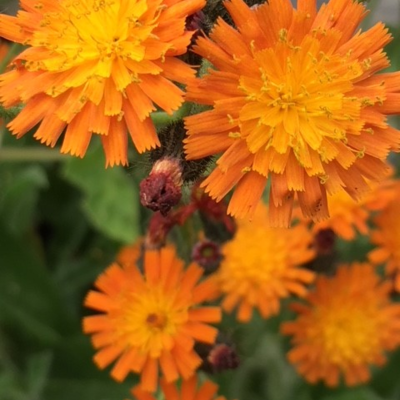

Plants for Pollinators highlights plants selected by the RHS as scientifically proven to tackle the declines in bees, butterflies and other pollinators.
Now here's a foxy flower- literally! Bearing fuzzy-looking, monarch orange flowers with brush-like edges, with stems covered in black hairs, it's easy to compare this low-maintenance wildflower to a fox leaving its den- and the clusters of new flowers which open beneath it to its shy, newborn litter of cubs!
- Type: Perennial
- Height: 15-30cm
- Flowers: June-September
- Soil requirement: Well-drained
- Light requirement: Full sun or partial shade
- Natural habitat: Meadows, embankments, road verges, stony wasteland
- Also known as: Devil's Paintbrush, Golden Mouse Ear, Grim-the-Collier
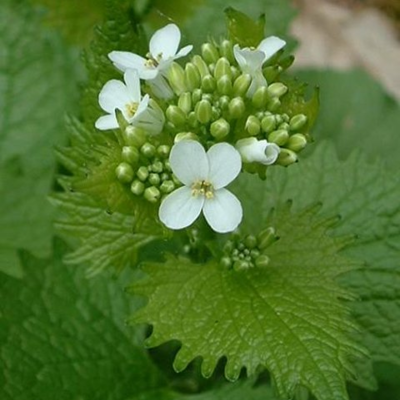

Plants for Pollinators highlights plants selected by the RHS as scientifically proven to tackle the declines in bees, butterflies and other pollinators.
Produces pearl white, four-petalled flowers and distinctly toothy heart-shaped leaves which provide the plant its name, as they smell like garlic when crushed. Its leaves are good for culinary usage, but its flowers make an excellent dressing for the garden, with their star-like petals sprinked beneath a bush creating a delectable display.
- Type: Biennial
- Height: 30-80cm.
- Flowers: April-July
- Soil Requirement: Well-Drained
- Light Requirement: Full or partial shade
- Natural Habitat: Woodlands, hedgerows
- Also known as: Jack-By-The-Hedge, Hedge Garlic
Choosing different wildflower plants by species gives you complete control over when you plant them, where you plant them and what the end result will be. And buying wildflower plug plants instead of seeds, means that you don't have to wait for them to germinate - perfect if speed is of the essence!
The full range of over 100 British wildflower plants species from Boston Seeds is available to buy online in trays of 25, 150 and 500 plug plants and all are available with nationwide delivery.
Want to learn more about the likes and dislikes of your favourite wildflower plants? Our handy wildflower species quide will tell you all you need to know - yours to download and keep for FREE.
Buy With Confidence

